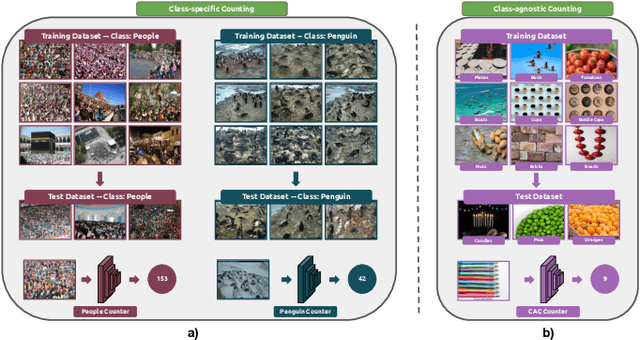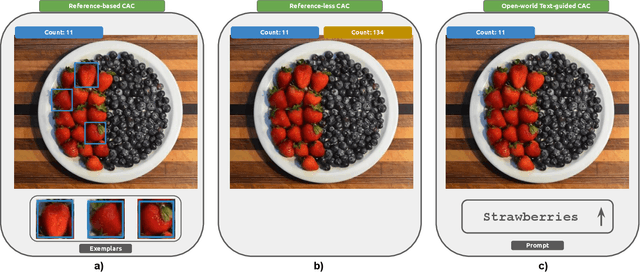Ali Azmoudeh
A Survey on Class-Agnostic Counting: Advancements from Reference-Based to Open-World Text-Guided Approaches
Jan 31, 2025



Abstract:Object counting has recently shifted towards class-agnostic counting (CAC), which addresses the challenge of counting objects across arbitrary categories, tackling a critical need in versatile counting systems. While humans effortlessly identify and count objects from diverse categories without prior knowledge, most counting methods remain restricted to enumerating instances of known classes, requiring extensive labeled datasets for training, and struggling under open-vocabulary settings. Conversely, CAC aims to count objects belonging to classes never seen during training, typically operating in a few-shot setting. In this paper, for the first time, we review advancements in CAC methodologies, categorizing them into three paradigms based on how target object classes can be specified: reference-based, reference-less, and open-world text-guided. Reference-based approaches have set performance benchmarks using exemplar-guided mechanisms. Reference-less methods eliminate exemplar dependency by leveraging inherent image patterns. Finally, open-world text-guided methods utilize vision-language models, enabling object class descriptions through textual prompts, representing a flexible and appealing solution. We analyze state-of-the-art techniques and we report their results on existing gold standard benchmarks, comparing their performance and identifying and discussing their strengths and limitations. Persistent challenges -- such as annotation dependency, scalability, and generalization -- are discussed, alongside future directions. We believe this survey serves as a valuable resource for researchers to understand the progressive developments and contributions over time and the current state-of-the-art of CAC, suggesting insights for future directions and challenges to be addressed.
 Add to Chrome
Add to Chrome Add to Firefox
Add to Firefox Add to Edge
Add to Edge